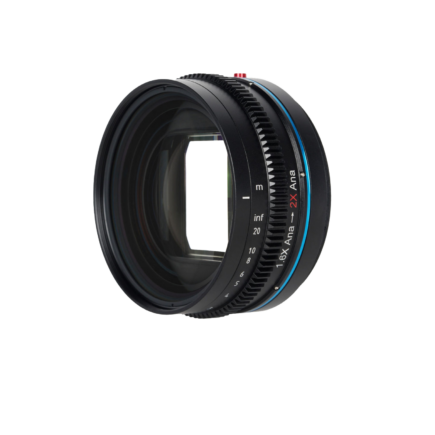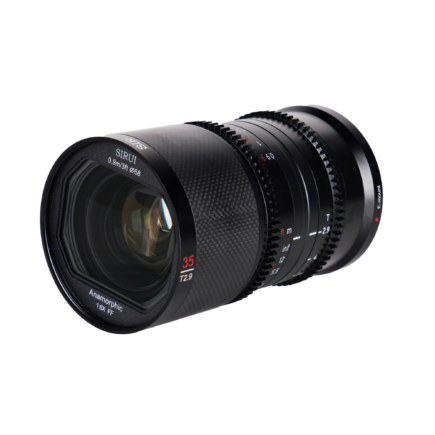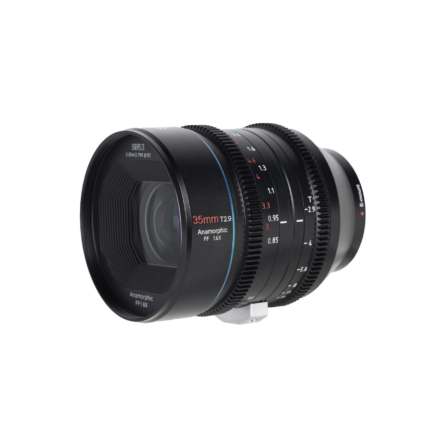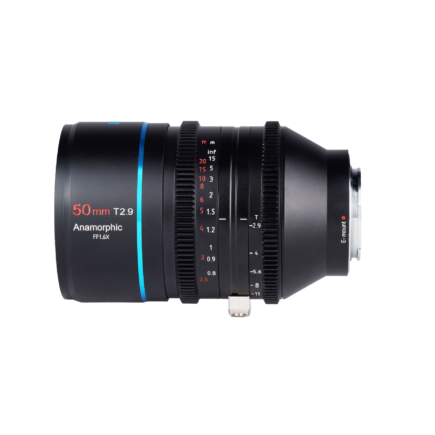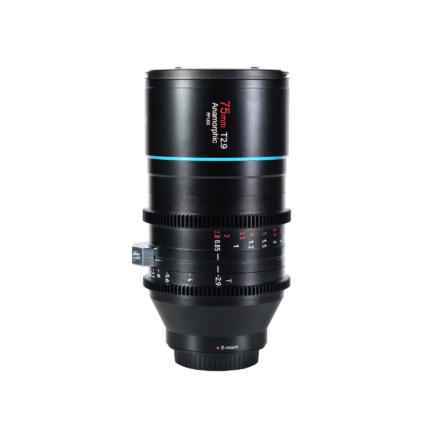SIRUI APS-C/S35/MFT Lenses
The Sirui 1.33x Anamorphic lenses are specifically tailored for APS-C/S35 and Micro 4/3 sensors. Depending on the sensor crop, different aspect ratios can be achieved - a 2.4:1 ratio with a 3:2 sensor, and a more expansive 2.8:1 ratio with a 16:9 sensor. This broad aspect ratio provides ample room for cropping during post-production.
While typical anamorphic lenses are known for being bulky, heavy, and costly, Sirui challenges this status quo with their innovative design. They offer lightweight, compact anamorphic lenses that deliver exceptional image quality at reasonable prices.
Sirui continues to evolve its diverse line of focal lengths to cater to various sensor sizes and camera mounts, always expanding to embrace new focal lengths and designs.
Constructed from aircraft-grade aluminium, Sirui anamorphic lenses incorporate high-quality German Schott glass elements. These elements feature high-definition nanocoatings to preserve image sharpness and quality. The front element also boasts a waterproof coating for added durability.
Sirui's collection includes 24mm, 35mm, 50mm, and 75mm lenses. These lenses employ a 1.33x squeeze factor and generate a 2.4:1 aspect ratio. They come in a variety of mounts, including Sony E, Canon RF, Nikon Z, Panasonic L, Canon EF-M, and Fuji X.
In terms of the 1.33x Anamorphic Squeeze, these lenses employ a distortive anamorphic front element that compresses the shot's horizontal axis by 1.33 times. This technique enables a greater volume of information to fit onto the sensor, which is then expanded either in post-production or in-camera (depending on the compatibility per manufacturers’ specs) to provide a broader field of view and ratio than a standard aspherical lens.
As for High Definition Optics, Sirui utilises superior German Schott glass in the lens optics to deliver high-definition resolution. These 1.33x Anamorphic lenses by Sirui have proven adept at producing images on high-resolution sensors without any issues.
In terms of ergonomics, all lenses in the range (with the exception of the 24mm lens, which has a 72mm filter thread) include a 67mm filter thread. Given their compact and lightweight nature, these lenses are perfect for run-and-gun style filming.
SIRUI Full Frame Lenses
Sirui T2.9 1.6x Anamorphic lenses are engineered for optimal performance with full-frame sensors. The different crop settings allow for a variety of aspect ratios. When using a 3:2 sensor, a 2.4:1 aspect ratio is achieved, while shooting in 16:9 allows for a significantly broader 2.8:1 ratio. This expanded aspect ratio facilitates greater flexibility during post-production cropping.
Conventionally, anamorphic lenses are bulky, large, and exorbitantly priced. However, Sirui bucks this trend by designing compact, lightweight anamorphic lenses that deliver excellent image quality at an accessible price point. Sirui continues to expand its diverse portfolio of focal lengths to accommodate a multitude of sensor sizes and camera mounts, incorporating new designs and focal lengths.
Crafted from aircraft-grade aluminium, Sirui anamorphic lenses incorporate superior German Schott glass elements. These elements are coated with high-definition nanocoatings to preserve image quality and sharpness. The front element is also treated with a waterproof coating for additional resilience.
The Sirui product line includes full-frame lenses in the following focal lengths: 35mm, 50mm, 75mm, 100mm, 135mm, and 150mm. These lenses feature a 1.6x squeeze factor, yielding a 2.8:1 aspect ratio. Notably, the 135mm lens carries a 1.8x squeeze factor, producing a 3.2:1 aspect ratio. Available mounts include Sony E, Canon RF, Nikon Z, and Panasonic L.
In terms of the 1.6x Anamorphic Squeeze, these lenses employ an anamorphic front element that distorts optics to compress the horizontal axis of the shot by 1.6 times. This allows for the capture of more information on the sensor, which is then expanded during post-production or in-camera (compatibility varies according to manufacturers' specifications) to provide a wider field of view and ratio than a standard aspherical lens.
For High Definition Optics, the lens optics incorporate premium quality German Schott glass, providing high-definition resolution. Sirui T2.9 Anamorphic lenses excel at rendering images on high-resolution sensors without any complications.
Consistent Ergonomics are maintained across the range with each lens incorporating an 82mm filter thread, consistent focus gears, a 1/4" mount, and a T2.9-22 aperture.
AVAILABLE ON BACKORDER
